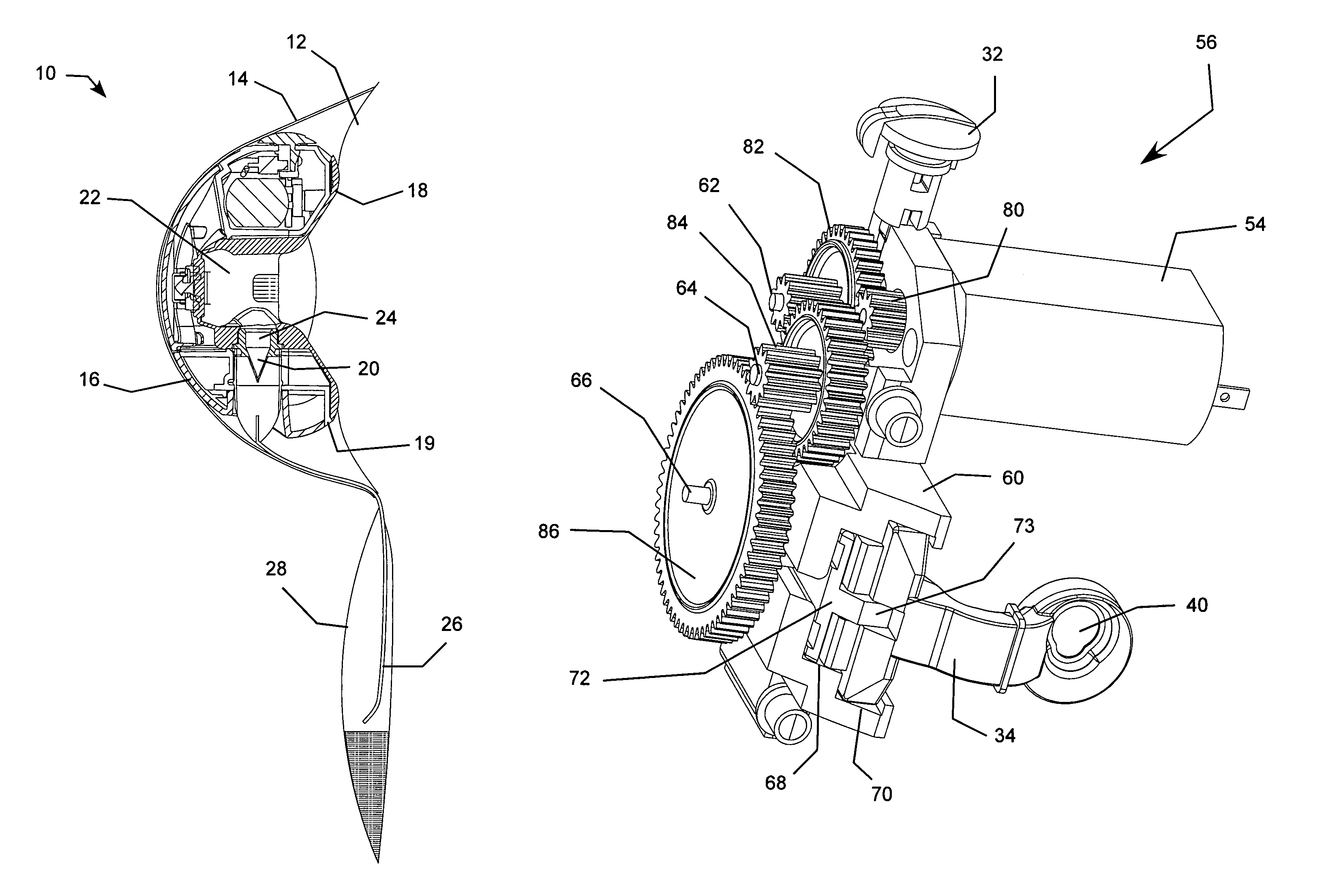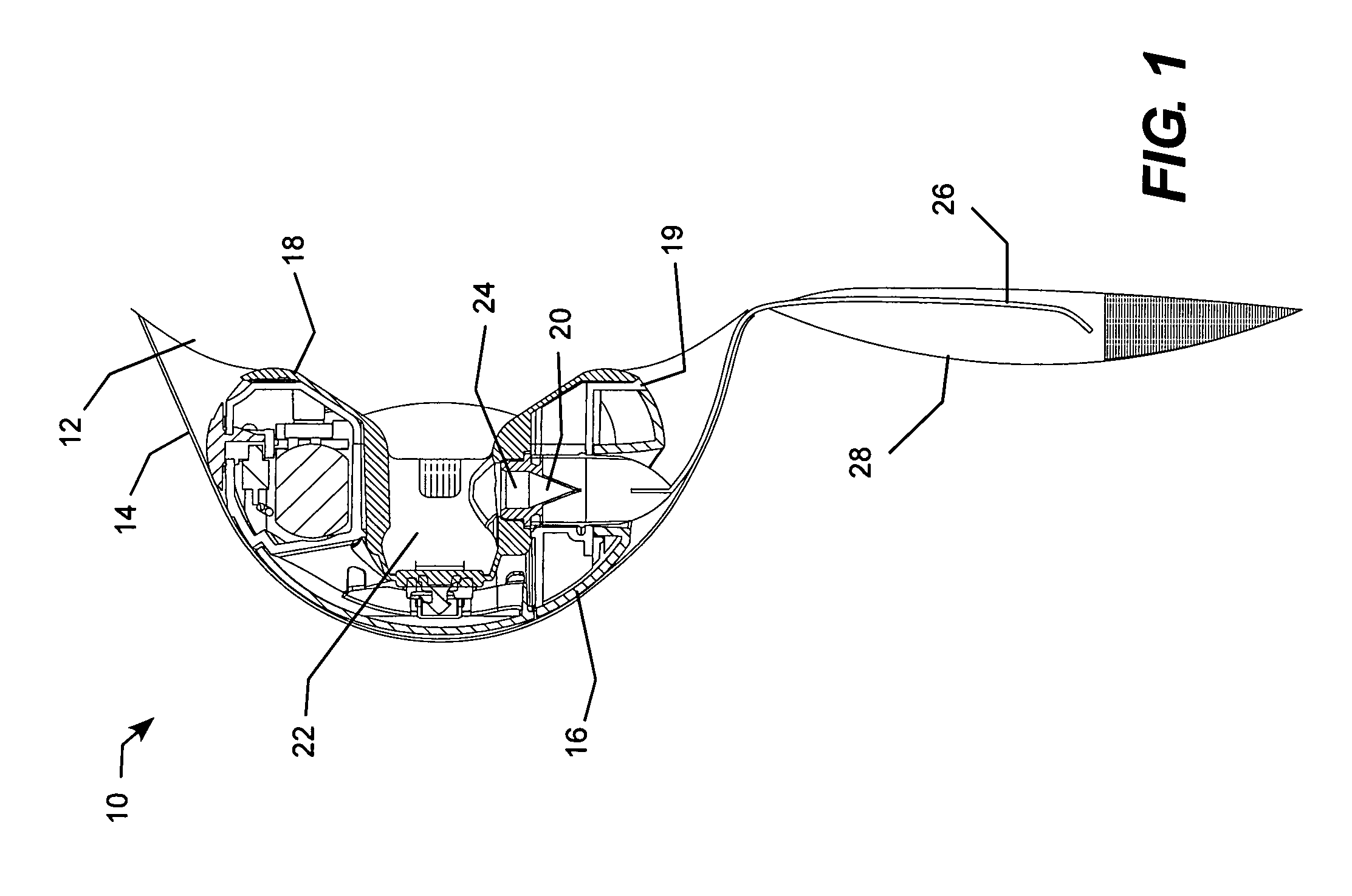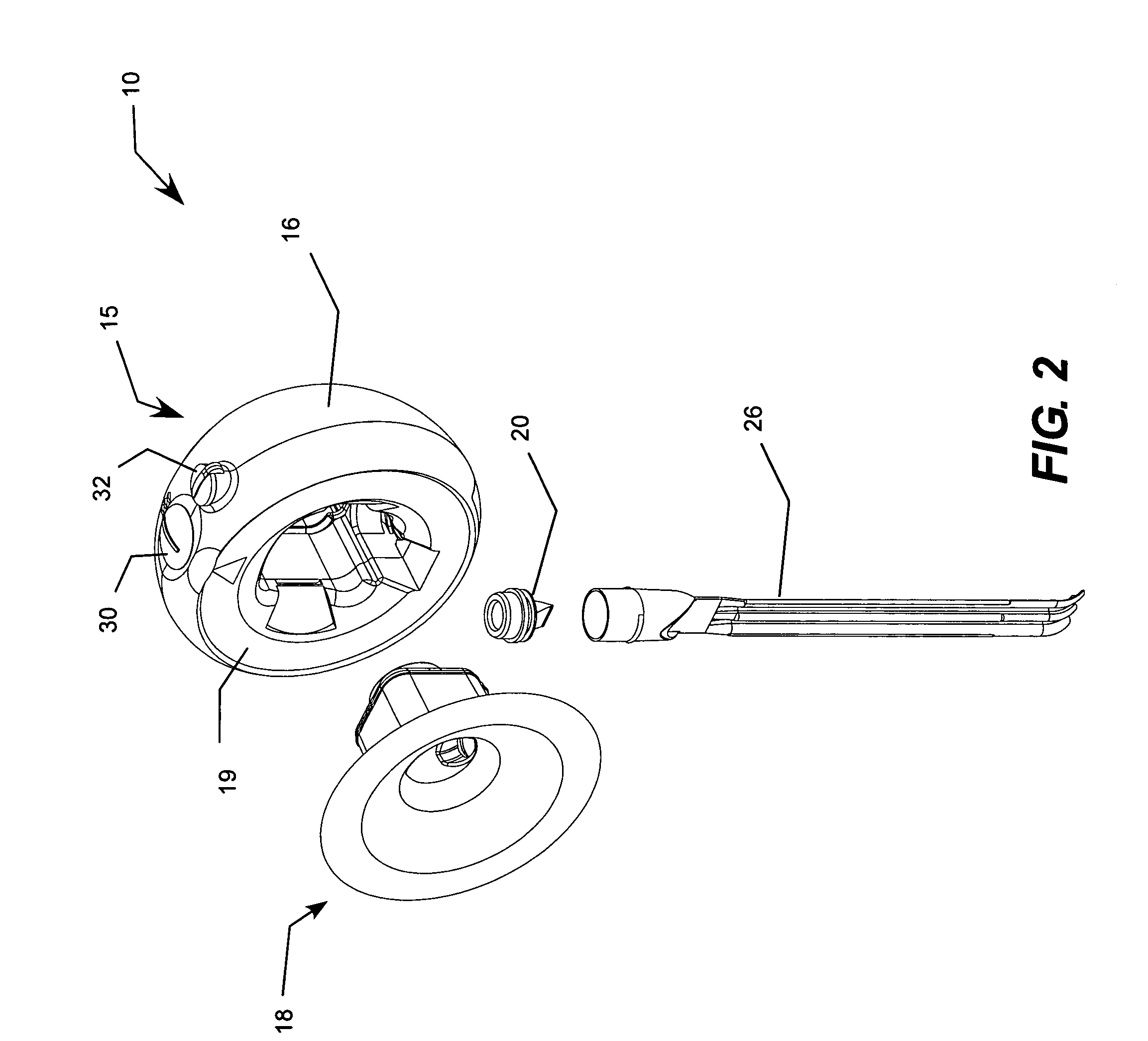Hands-free breast pump with balanced reciprocating drive
a breast pump and hand-free technology, applied in the field of breast pumps, can solve the problems of pump failure, pump application of significant force, and pump failure, and achieve the effects of reducing noise, reducing the volume of the vacuum chamber, and reducing the amount of pump
- Summary
- Abstract
- Description
- Claims
- Application Information
AI Technical Summary
Benefits of technology
Problems solved by technology
Method used
Image
Examples
Embodiment Construction
[0039]The present invention may be embodied in a hands-free breast pump with a balanced push-pull mechanical actuator and cam drive system that applies pumping force to a bellows structure of a breast interface cup during inward and outward pump strokes. As the Gen-1 design applied no motor force to the bellows structure on the outward pump stroke, configuring the Gen-2 pump to apply any amount of motor force to the bellows structure during both the inward (push) and outward (pull) strokes achieves some level of balance in the drive system and therefore improves the balance over the Gen-1 design. Significant attention has been paid to this design feature in the Gen-2 pump, which achieves a relatively high level of balance, for example where the force applied by the pump during the inward stroke is within eighty percent (80%) of the force applied during the outward stroke. In the particular embodiment shown in the figures and described below, the Gen-2 pump is well optimized to achie...
PUM
 Login to View More
Login to View More Abstract
Description
Claims
Application Information
 Login to View More
Login to View More - R&D
- Intellectual Property
- Life Sciences
- Materials
- Tech Scout
- Unparalleled Data Quality
- Higher Quality Content
- 60% Fewer Hallucinations
Browse by: Latest US Patents, China's latest patents, Technical Efficacy Thesaurus, Application Domain, Technology Topic, Popular Technical Reports.
© 2025 PatSnap. All rights reserved.Legal|Privacy policy|Modern Slavery Act Transparency Statement|Sitemap|About US| Contact US: help@patsnap.com



